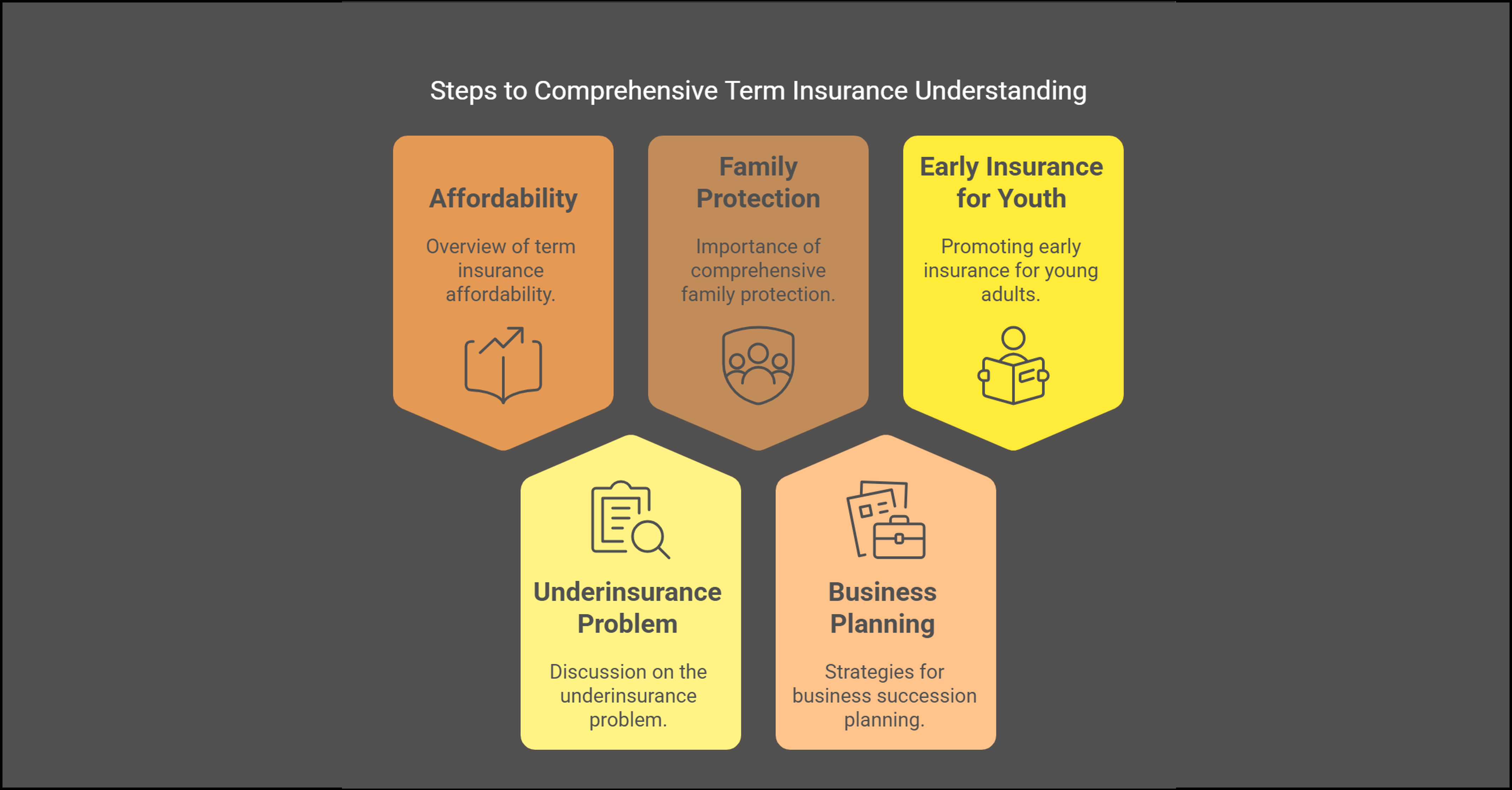By Sabine Jensen
When it comes to securing your family’s financial future, life insurance is often a key consideration. But with so many options available, how do you know which type is right for you? Is Term Life Insurance worth it? Term life insurance is frequently touted as an affordable and flexible option, but is it truly worth it? In this post, we’ll dive into the ins and outs of term life insurance, exploring when it might be a good fit and when it might not be the best choice. Whether you’re just starting out, on a budget, or need short-term coverage, this guide will help you make an informed decision.
Why Term Life Insurance Might Be a Good Idea
Cost-Effective Coverage
One of the most appealing aspects of term life insurance is its affordability. If you’re seeking a budget-friendly way to ensure your family’s financial security, term life insurance offers substantial coverage at a fraction of the cost of permanent life insurance. This cost-effectiveness makes it particularly attractive for young families or individuals who are just beginning their financial journey and need to keep a close eye on their expenses.
For those who are starting out, managing a budget is crucial, and term life insurance provides a practical solution without compromising on protection. It allows you to allocate your resources wisely while still safeguarding your loved ones’ future. By choosing term life insurance, you can enjoy peace of mind knowing that you’re making a financially sound decision that aligns with your current needs and priorities.
Short-Term Needs
Term life insurance is a great choice for those who need coverage for a specific timeframe. Whether your goal is to protect your family while you’re paying off a mortgage, ensure financial security while your children are still at home, or secure your business’s continuity, term life insurance provides peace of mind during these pivotal years. It offers a straightforward and effective way to address your immediate financial protection needs without long-term commitments.
As the term comes to an end, you have the flexibility to reevaluate your situation and determine the best course of action. You can choose to convert the policy to a permanent one if your needs have evolved, or simply let it lapse if the coverage is no longer necessary. This adaptability allows you to tailor your insurance strategy to fit your changing circumstances, ensuring that you remain in control of your financial planning.
Flexibility and Adaptability
Life is unpredictable, and your insurance needs may change over time. Term life insurance offers the flexibility to adjust your coverage as your circumstances evolve. Most policies can be converted into a permanent one, providing a seamless transition if your long-term needs change.
Supplementing Other Financial Assets
If you already have financial assets set aside for your loved ones, term life insurance can act as an extra layer of security. It provides a safety net that ensures your family remains financially stable in the unfortunate event of your untimely passing. This way, you can protect your existing assets, allowing them to be used as intended, whether for education, retirement, or other long-term goals.
By incorporating term life insurance into your financial plan, you can offer your family peace of mind, knowing they have additional resources to rely on. This approach allows you to maintain the integrity of your financial legacy, ensuring that your loved ones are supported without having to tap into the assets you’ve carefully built over time. It’s a strategic way to enhance your overall financial protection plan.
When Term Life Insurance Might Not Be the Best Fit
Lifelong Protection
If you’re looking for lifelong protection, term life insurance might not be the ideal choice. Once the term ends, so does your coverage, meaning you’ll need to find a new policy if you still need insurance. However, there’s a handy option to consider: converting your term policy to a permanent one. This can save you a significant amount of money in the long run. We all understand that permanent insurance premiums tend to be higher because they offer more than just short-term protection. Here’s a strategy you might consider: start by paying the lower premiums of a term policy for, say, 30 years. Then, when the term is up, you can switch to a permanent policy while maintaining your original healthy underwriting class. This approach allows you to manage costs effectively while planning for long-term security. This strategy is only effective if your main goal is to secure a death benefit rather than to build wealth through cash value.
Building Wealth
Term life insurance is designed primarily for protection, not for building wealth. If you’re looking to use life insurance as a tool for wealth accumulation, you might want to explore permanent life insurance options that offer cash value components.
Other Considerations
Length of the Term
Selecting the appropriate term length is essential when considering life insurance. It’s important to evaluate your financial responsibilities and determine how long you’ll need coverage. Typically, term lengths range from 10 to 30 years, so it’s wise to reflect on your long-term objectives and choose a term that fits your needs. Keep in mind that time can pass quickly; what seems like a sufficient 10-year term can fly by. Remember, while you can always opt to reduce the term, extending it isn’t possible unless you convert the policy.
Conversion Options
Many term life insurance policies come with the option to convert to a permanent policy, which can be incredibly valuable if your needs evolve over time. It’s a feature worth considering, so when you’re selecting a policy, make sure to ask about the available conversion options. This flexibility can provide peace of mind, knowing you have the ability to adjust your coverage as your circumstances change.
Additionally, it’s important to choose a carrier that offers access to their entire permanent life insurance portfolio for conversion, rather than limiting you to just one product. This ensures you have a range of options to select from, allowing you to find the best fit for your long-term financial goals. Taking the time to understand these options can make a significant difference in the value and adaptability of your life insurance coverage.
Conclusion
Term life insurance can be an insanely valuable tool for protecting your family’s and business financial future, especially if you’re looking for affordable, short-term (10-30years) coverage. By understanding your needs and evaluating the pros and cons, you can make an informed decision that aligns with your financial goals. Remember, the best insurance policy is one that provides peace of mind and security for you and your loved ones.





One response
[…] Is Term Life Insurance Worth It? Unpacking the Benefits and Drawback. […]